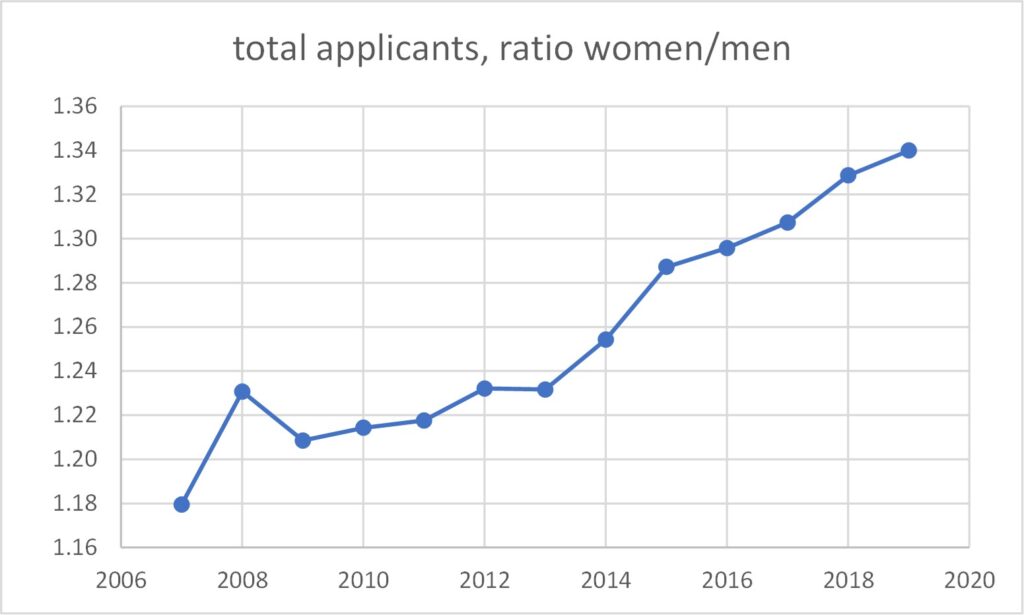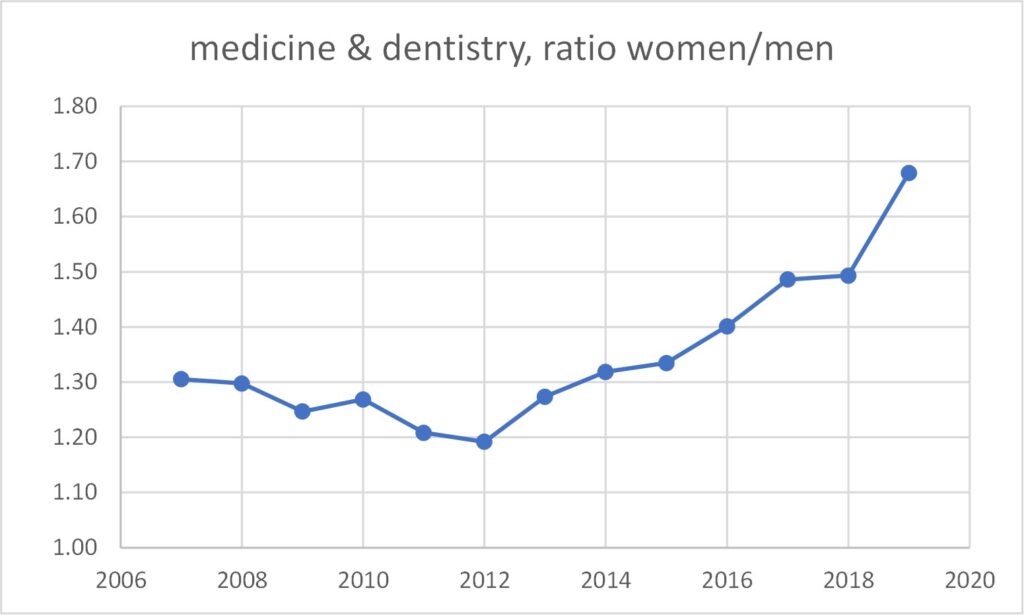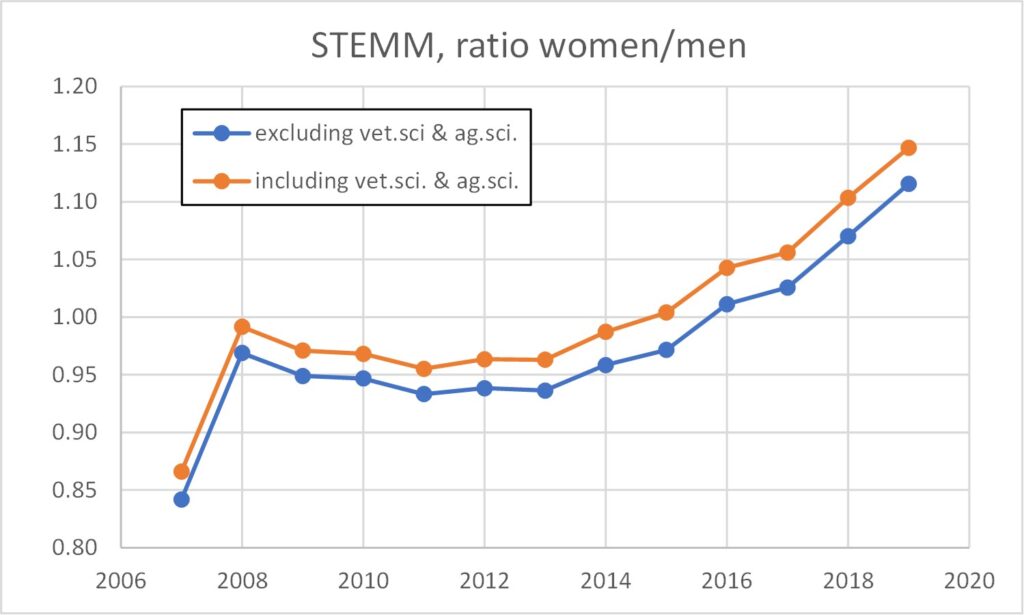
Here I review the statistics of university entrants disaggregated by sex and broad subject area and how this has varied from 2007 to 2019. Data have been taken from UCAS Undergraduate Accepted Applications at end-of-cycle 2019. This covers the whole of the UK but is restricted to applications via UCAS. For people living in England, Wales, and Northern Ireland, UCAS covers the overwhelming majority of full-time undergraduate provision. However, in Scotland around a third of young full-time undergraduate study is not included in UCAS’ figures.
You may proceed straight to the graphs at the end if you are so minded.
The big picture is this: in society at large, men are disadvantaged in education, health care, criminal justice and the operation of the family courts. The corresponding academic disciplines are education, medicine, law and social studies – in all of which women dominate by large amounts.
Overall numbers of applicants accepted onto UK undergraduate courses continues to increase, due mostly to increases in women applicants (Fig.1).
The ratio of women to men starting undergraduate courses continues to increase, reaching an excess of women over men across all subjects of 34% in 2019 (Fig.2). There is no sign that the rate of increase of this excess of female over male undergraduates is slowing down.
The number of women studying medicine has exceeded the number of men for decades. In 2019 the ratio of women to men starting courses in medicine or dentistry increased substantially reaching an all-time high, there now being 68% more women in such courses (Fig.3). Coupled with the greater tendency for female doctors to go into general practice, it may become hard to find a male GP in the near future.
The ratio of the number of women to men studying subjects allied to medicine is trending slowly upwards, being 4.5 in 2019 (Fig.4). Note that if attention were confined to nursing alone, this ratio would be between 9 and 10.
The dominance of women in the biological sciences continues, reaching an all-time high of 65% excess of women over men in 2019 (Fig.5). This is far greater than men’s dominance in physical sciences, which is only 20%, and reducing each year (Fig.6).
Women have dominated over men in the pure sciences for decades (Fig.7), a simple fact which has yet to penetrate the crania of politicians. There is now an excess of women in the sciences as a whole of 44%. Yet the constant narrative remains that women need special assistance in the sciences.
Engineering (of all types) and computer science/information technology are the two subject areas in which men dominate strongly (Fig.8). Whilst there might be a very slight trend upwards in the ratio of women to men in these subjects, in round terms there remains five men to every women. Maths is highly unusual in exhibiting a reducing ratio of women to men, reaching a low of 0.57 in 2019, i.e., nearly two men to every woman.
Fig.9, and the graphic which heads this post, shows the ratio of women to men across all STEMM subjects, defined as the total of subjects discussed above, i.e., science, technology, engineering, maths, medicine and subjects allied to medicine. Women reached parity with men in 2015 since which time women have become dominant in STEMM. The excess of women in STEMM reached 15% in 2019. Yet the obsession with women-in-STEMM continues. Do not believe that the zealots who pursue this agenda are ignorant of the position. Their attentions will simply focus on the remaining areas of male dominance, especially engineering and IT.
There are three times more women studying veterinary or agricultural sciences (Fig.10).
Architecture is the only subject other than the T, E and first M of STEMM in which men dominate, but the proportion of women is increasing steadily (Fig.11).
There have been over twice as many women as men studying law for several years, and the excess of women continues to climb steadily (Fig.12). A good job there’s no suggestion of bias against men in the courts, then, eh?
More than three times as many women as men are studying languages and this female dominance continues to increase (Fig.13).
There are nearly twice as many women studying art & design as men, Fig.14.
There are more than six times as many women as men studying education, Fig.15.
There is an excess of women over men of more than 60% in social sciences or social studies.
In conclusion, the trend towards ever more emphatic female dominance in tertiary education continues, with the ratio of female to male students tending to increase, both in subjects where women already dominate and often also in subjects where they do not yet dominate (e.g., physical sciences, architecture). The exceptions remain engineering, maths and IT. But women dominate in STEMM as a whole and this dominance is increasing.















